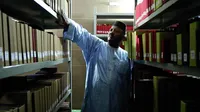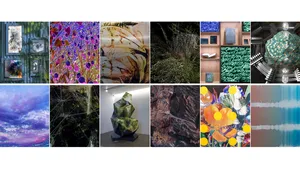The trials and triumphs of the Timbuktu manuscripts

The ancient manuscripts of Timbuktu — some 400,000 pages of text detailing everything from the Koran to mathematics to astronomy and astrology — are more than important historical documents. Central to the heritage of the West African nation of Mali, they represent the long legacy of written knowledge and academic excellence in Africa, and hold potential to inspire global learning from the actions of the past in confronting modern day issues.
Today, thanks to the initiative of the families who have protected the manuscripts from harm for generations and the capabilities of technology, more than 40,000 of those pages are digitally available for the first time for the world to explore on Google Arts & Culture. With this comes the hope that this legacy can be preserved and its potential harnessed to promote peace and cultural understanding.
The heroes who kept the manuscripts safe
The history of the manuscripts is known worldwide, in part thanks to their heroic preservation story. The collection, which was not held by a museum or institution but by individual families willing to safeguard their cultural heritage, was in danger when extremists seized Mali in 2012, destroying heritage sites and burning the manuscripts they came across in their wake. But the people of Timbuktu did not let their written heritage be crushed underfoot. By jeep, car and canoe, they smuggled as many manuscripts as they could out of the occupied city to safety, though sadly not all of the pages were able to be rescued.
When extremists targeting sites of cultural heritage seized the country of Mali in 2012, many manuscripts were destroyed and the rest of the collection significantly endangered.
In the face of danger, the people of Mali banded together to smuggle the manuscripts out of Timbuktu to safety, doing the country and world a great service by bravely preserving the priceless collection for generations to come.
After scanning the manuscripts page by page, the collection on Google Arts & Culture now contains 40,000 digitized pages in high resolution, for scholars and the public alike to explore.
Conserving, cataloging, boxing and continuing to study these pages are all part of the preservation efforts taken on by SAVAMA-DCI, the organization now holding and promoting the collection.
Preserving these collections physically and digitally will ensure that these pages and their teachings are passed onto forthcoming generations as both historical artifacts and documents with meanings still relevant to today to be studied and better understood.
Technology that creates new access
Now held at the headquarters of cultural preservation organization SAVAMA-DCI, their legacy can live on through continued study of the texts and maintenance of the delicate ancient pages. The digitized collection and experiment, visualizing a large manuscript archive available on Google Arts & Culture, opens a completely new door to understanding the past and the cultural significance of the archives. The documents that represent a Renaissance in African history – previously thought to be spoken but never written – are now accessible to the public and modern scholars around the world.
Though the manuscript collection became better known on the world stage after it was rescued during Mali’s 2012 extremist occupation, the texts’ legacy stretches far beyond the twenty-first century, containing a wealth of knowledge which filtered down through the scholars of Timbuktu, a key seat of Islamic-world studies, across nine centuries. While the manuscripts’ production reflects a keen skill for inscribing beautiful calligraphy styles on a range of materials — from Italian paper to fish skins — their content ranges from surprisingly contemporary topics, such as sex tips, the question of whether smoking should be banned and insight into practises of black magic, to ever-relevant teachings about peacekeeping, human rights and good governance.
Enter a virtual experience introducing the manuscripts, their journey through history, and presenting the 40K+ digitized manuscripts.
Dive deep into an engaging 3D view of the compiled books to flip through the various manuscripts and study up close.
Immerse yourself in a Universe of Verse, the floating manuscript collection, and select pages to explore in more detail.
Delicate and decorative folio like this page from an ancient copy of the Quran, containing important teachings both religious and secular, are amongst the collections that families preserved in their homes for centuries before the evacuation from Timbuktu.
As well as containing writings rich with ancient teachings on a wide range of subjects, many manuscripts are embellished with drawings and diagrams that shed light on life in medieval Timbuktu, such as this page displaying a traditional musical instrument.
The Timbuktu manuscripts bear witness to the Islamic world’s understanding of astronomy, some emerging hundreds of years before the time of Galileo.
In narrating stories of conflict resolution in African history between the empires and kingdoms of centuries ago, the manuscripts offer relevant points of comparison and wisdom that can be applied to periods of conflict and instability that ensue in our modern world. In this context, so too can the manuscripts play a key role in shaping African identity.
In these pages we can identify ourselves and our ancestors as the authors of histories of peace and wisdom — and so connect to our heritage through a certain recognition of ourselves within it.
Immerse yourself in the Timbuktu Manuscripts on g.co/TimbuktuManuscripts online or through the Google Arts & Culture mobile app on iOS and Android.





